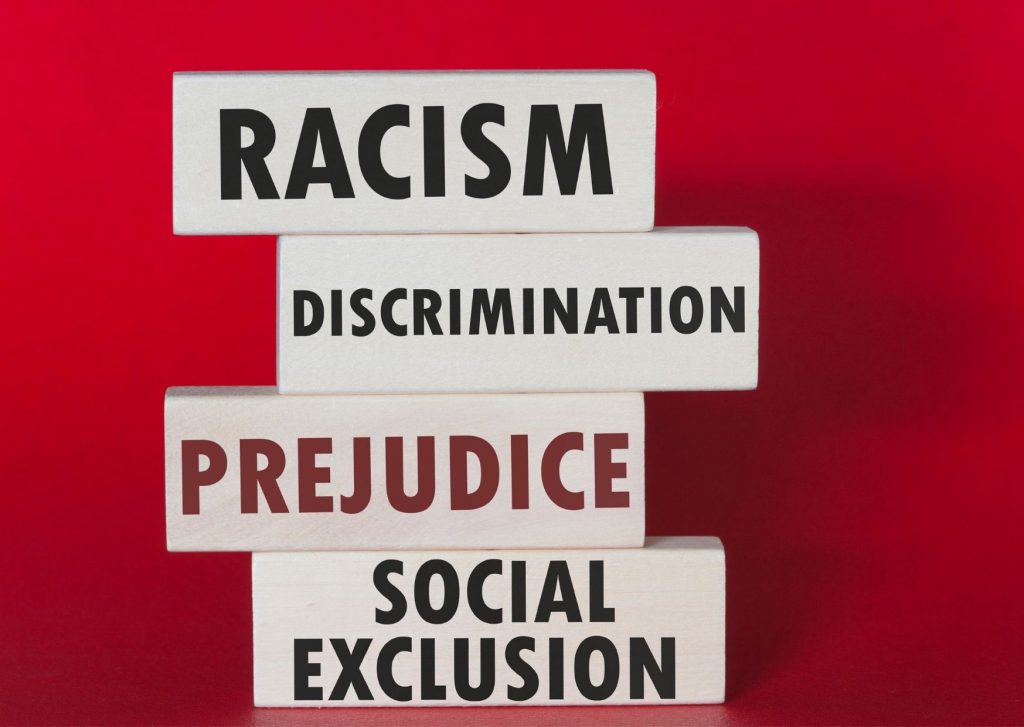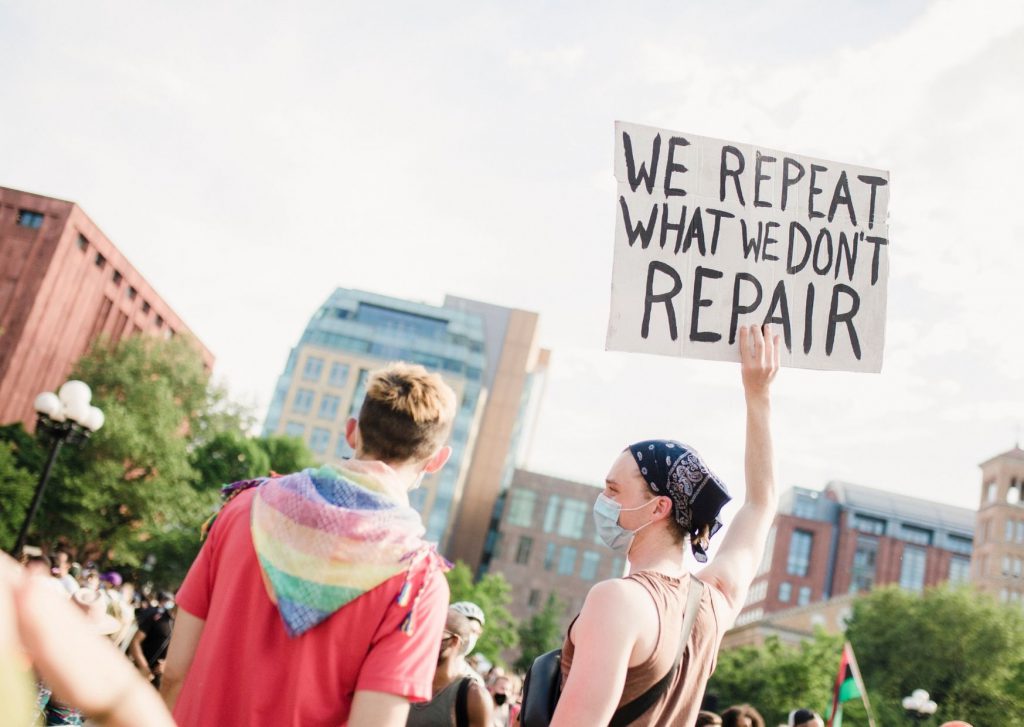Discrimination
Discrimination is an unfair or unequal treatment of an individual or group, based on certain characteristics. Such characteristics include, but are not limited to, race, age, gender, sexual orientation, religion, disability. Discrimination of any kind shall be prohibited; however, it is still happening, and some people might be unaware of the fact that their behaviour is discriminatory. People can be unaware of their racial biases or unaware of the hurtful effects.

For instance, one form of discrimination is gender discrimination, which is called sexism. Gender discrimination means that sometimes women and men are not treated as equals, but that women are seen as ‘less than’ men. Examples of gender discrimination are the so-called ‘gender pay gap’, where women make less money for every dollar a man makes, but also double standards in society that affect both men and women.
Another example is ableism. Ableism is the discrimination of and social prejudice against people with disabilities based on the belief that typical abilities are superior. At its heart, ableism is rooted in the assumption that disabled people require ‘fixing’ and defines people by their disability. Much like racism and sexism, ableism classifies entire groups of people as ‘less than’, and includes harmful stereotypes, misconceptions, and generalizations of people with disabilities.
NORMS AND VALUES
We are all raised in different contexts, in different families, different societies, different religions, or different countries maybe. Our families and society around us have a major impact on us in how we see the world. For instance, you learn what is good, important, useful or desirable based on what you have been thought. But also the society we live in has certain norms. You probably live surrounded by other people. This group of people all together will also consider behaviour that is acceptable, this is what we call social norms. Although you might feel as if the social norms that you know apply everywhere, social norms can be very different one community to another. Accepting those differences can make us stronger.
There are also similarities between people
You can for example, listen to the same music or love the same sport, share the same religion or wear the same type of clothing. An important similarity between us, is that most people appreciate to belong and that is very upsetting to be excluded from something. Another similarity is that everyone has prejudices. A prejudice is an opinion about something or someone of which you can’t be sure whether it is true or not. This opinion is usually about a group of people. Examples of this would be ‘girls can’t play football’, ‘boys like to fight’, ‘boys who are gay behave girlish’.
Prejudices often determine how you expect others to be and therefore they will determine how you feel about meeting someone for the first time. Prejudice and discrimination often occur when we see each other as groups: one characteristic of that group is focused upon instead of the many other characteristics each person of that group has. Such prejudices often find their origin in differing norms and values, resulting in a clash between differing world views.
Diversity is a strength
Article 1 of the UNESCO Universal Declaration on Cultural Diversity reads that “as a source of exchange, innovation and creativity, cultural diversity is as necessary for humankind as biodiversity for nature.” Cultural diversity, or all the different views that we have on the world can be become a strength if we are ready to accept new perspectives and rationalise our fear of the unfamiliar. A diversity of perceptions, experiences, knowledges, sensibilities, is what makes us move forward.



